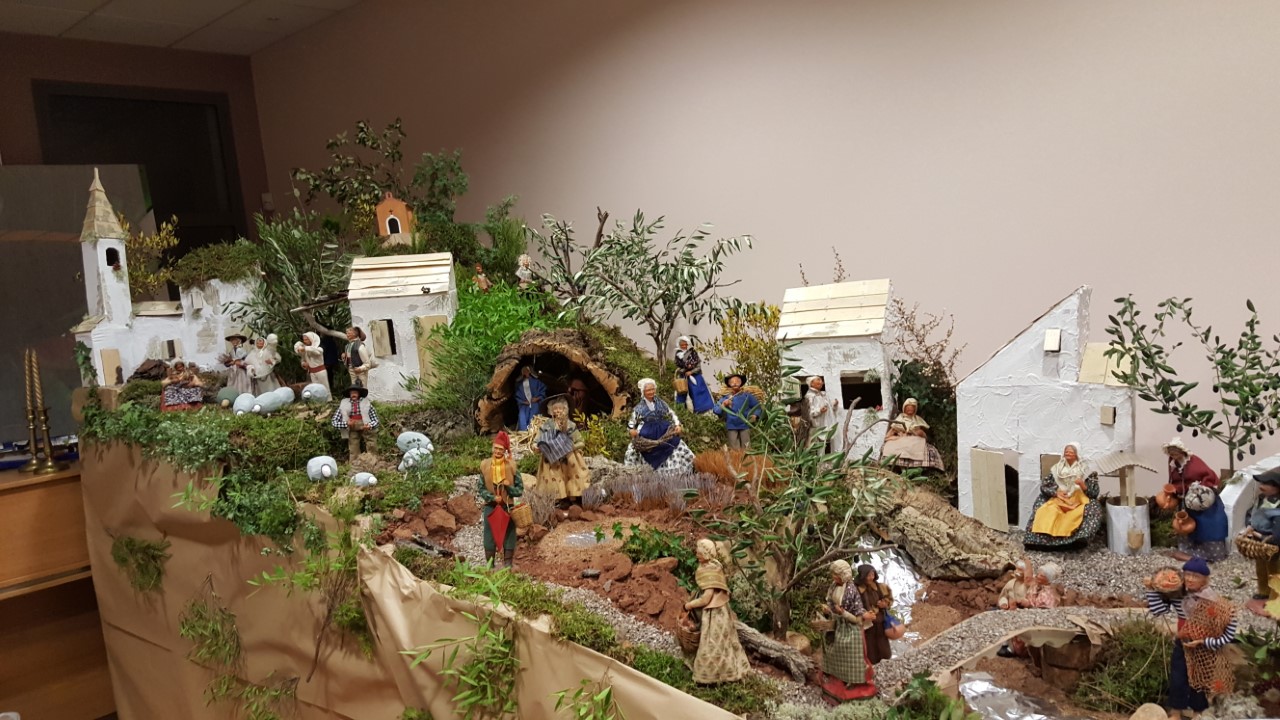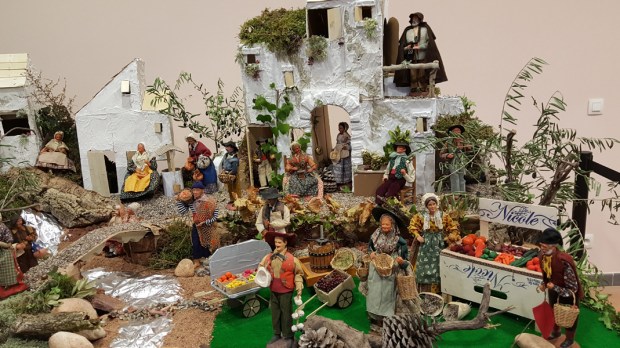You can find Nativity scenes in many parts of the world, but the displays in the Provence region of the south of France are more elaborate. Provençal Crèches are part of a patrimony, a tradition passed on from generation to generation. It’s hard to imagine Christmas in Provence without these unique Provençal crèches.

A true crèche includes the traditional Nativity scene with Baby Jesus, Mary, and Joseph — but in Provence, it expands into a replica of a Provencal village, a 19th-century miniature displayed in Catholic churches, public places, and especially in homes. The tradition started at a time when religious festivals and gatherings were banned.
Attacks on the Catholic Church during the French Revolution caused havoc in the country; it also led to many changes in the religious practices of the French people. In 1789, churches were closed down; there were no more midnight Masses to attend and no crèches to celebrate Christmas. Banning the Nativity scene greatly affected the people of Provence. As devoted Christians, more than anything they wanted to keep the Provençal tradition going.
One devotee found the solution. His artistic idea took off, and so started the Provencal tradition.
The villagers began making their own little crèches in their homes, fabricating figurines to represent village people such as the baker, the butcher, the schoolmistress — ordinary people living their lives.
And, by secretly adding the Nativity scene on Christmas Eve, it allowed them to create a link between their own family life and that of Baby Jesus. They used simple material such as cloth, paper, twigs and even leaves to make their crèches: anything that was affordable and easy to find at the time.
The tradition continued over the centuries and today these little figurines — called santons — molded in clay, hand painted and dressed in Provencal clothes, are of particular importance to the people of Provence. The word santon comes from the Provençal word santoun, which means little saint. A person who makes santons is a santonnier.
A family album
One of these artisans, Maxime Codou, explained that a Provencal crèche narrates “the story of the family, starting with santons representing the different jobs of family members.”
The santonnier, whose father and grandfather also made santons, explained why each family has its own crèche and the importance of cultural transmission.
He says: “Our Provincial crèche is like an open book representing our culture, our Provencal history as well as our own family history: it is where we traditional Provençal families add our joys and difficulties. We do this through the santons and the scenes we create. What’s important to know is that a crèche is something we inherit and transmit from generation to generation rather like a family album. Santons are not toys; they are symbolic.”
Maxime, passionate and keen to guard Provencal tradition, emphasized that Provincial crèches were natural. He explained:
“You cannot cheat with a Provençal crèche. You owe a certain respect toward the family. You won’t find any plastic, polystyrene or ‘made in China’ labels in our crèches.”
Nowhere else on earth
The 30-year-old and his team created a crèche at the museum of the Chapel Saint-Jean in the small medieval village La Garde Freinet in Southeast France. This is his fourth consecutive display, a gigantic crèche covering three rooms, with three scenes full of figurines, décor, lights and music, depicting village life as well as the birth of Christ.
The masterpiece took more than a year to put together with over 5,000 carved santons about seven centimeters (almost three inches) high, all hand painted and exquisitely put together in typical Provencal settings, including animals, windmills, lavender shrubs, and olive trees in the landscape.
Santonniers like Maxime Codou display and sell their crafts at special santon fairs, exhibitions, and Christmas markets to families keen to enlarge their crèches or simply to collect unique pieces.
Santons are specific to Provence. The santonniers are fine artisans who pay attention to minute details such as postures, expressions, and landscape. Here in Provence, you find displays where bakers, the butchers, winemakers, fishmongers and even the local priests are alongside Baby Jesus, Mary, Joseph and the Wise Men.
What an excellent way to reconnect with our Christian family values, tradition and roots at Christmas time.

